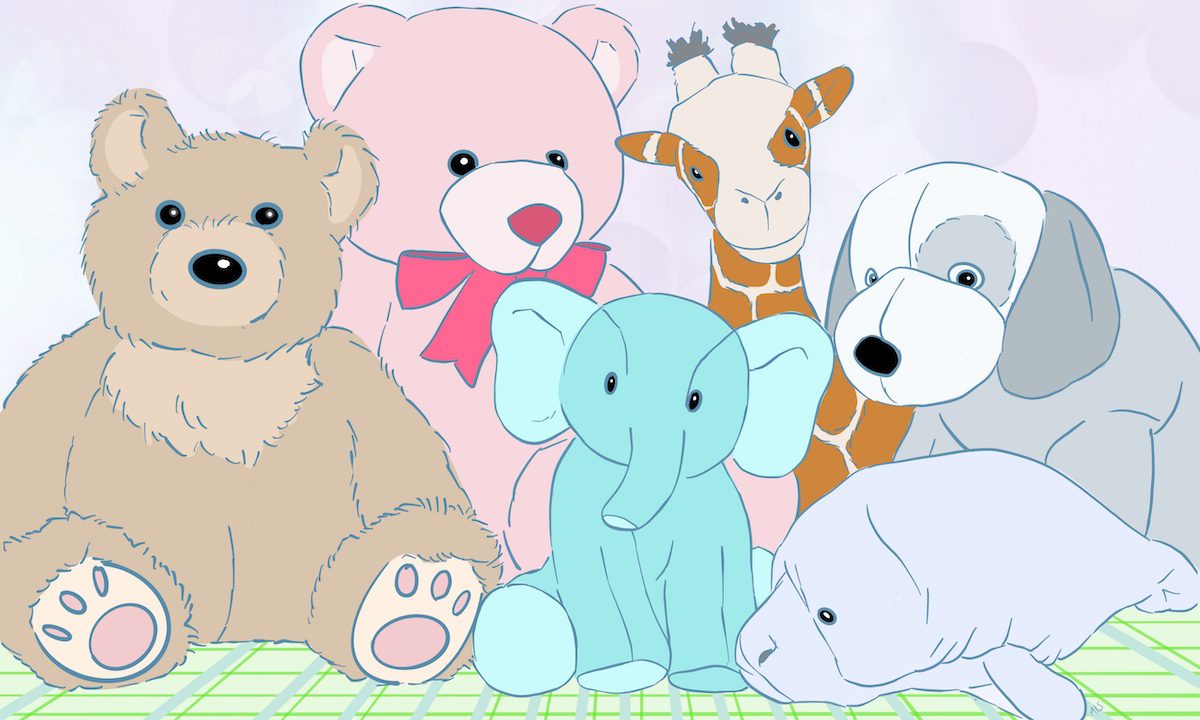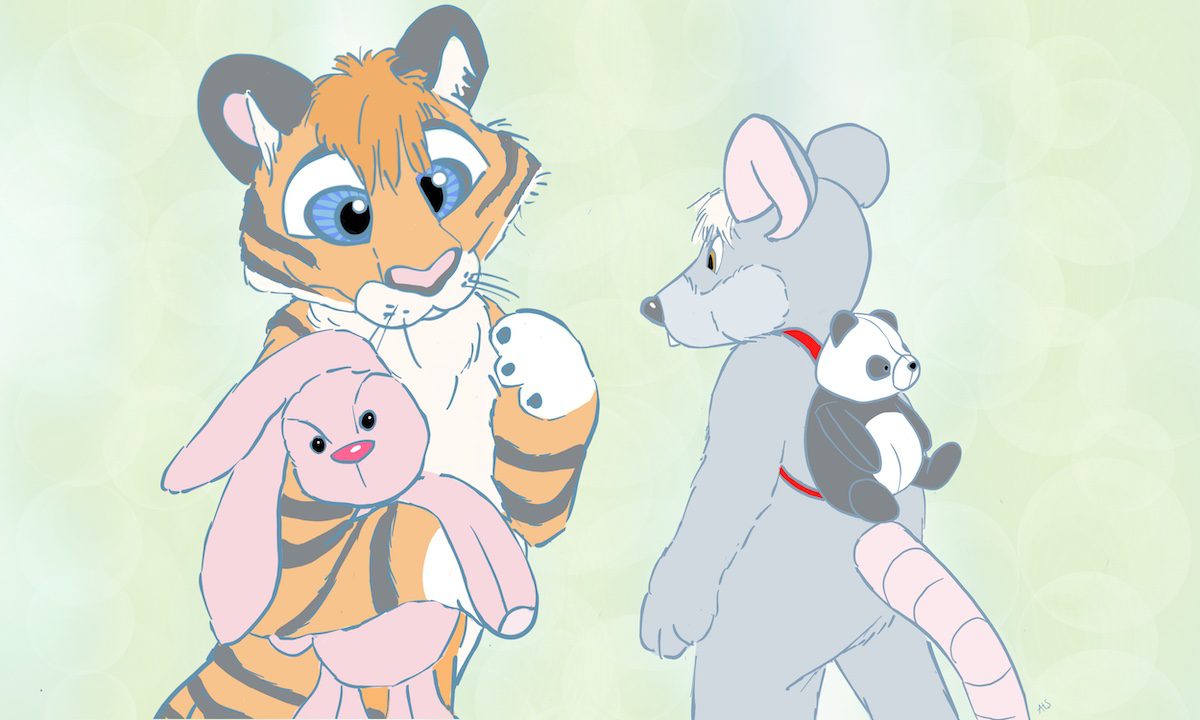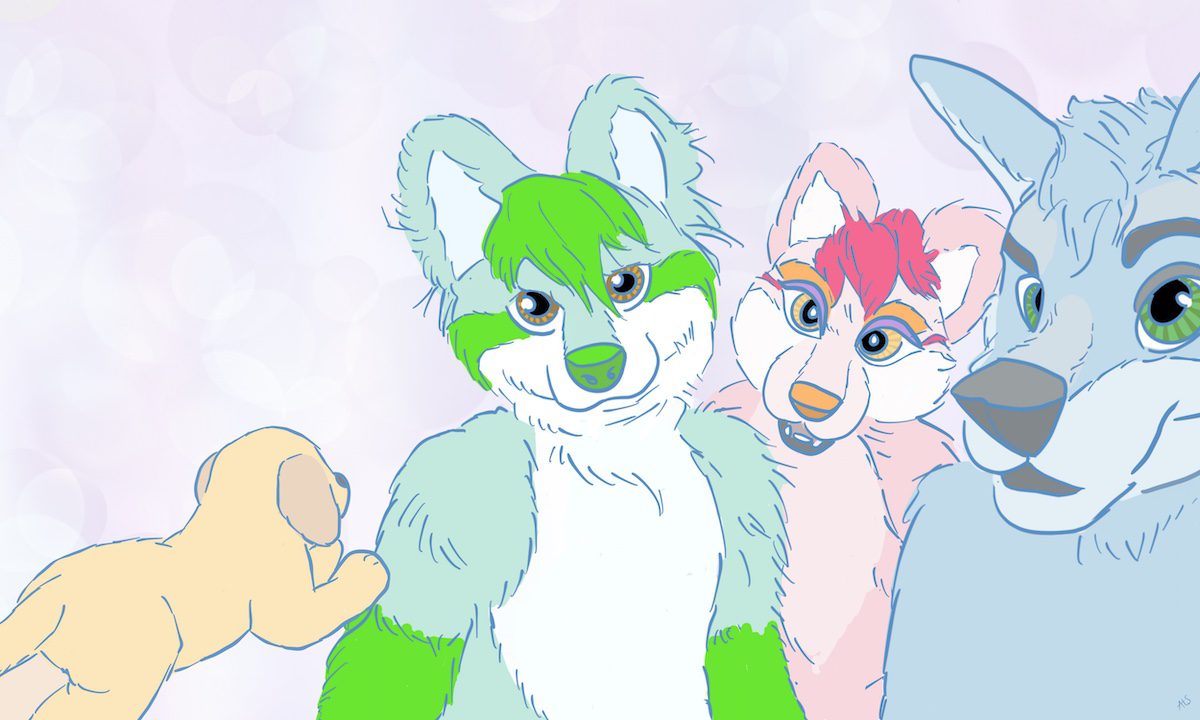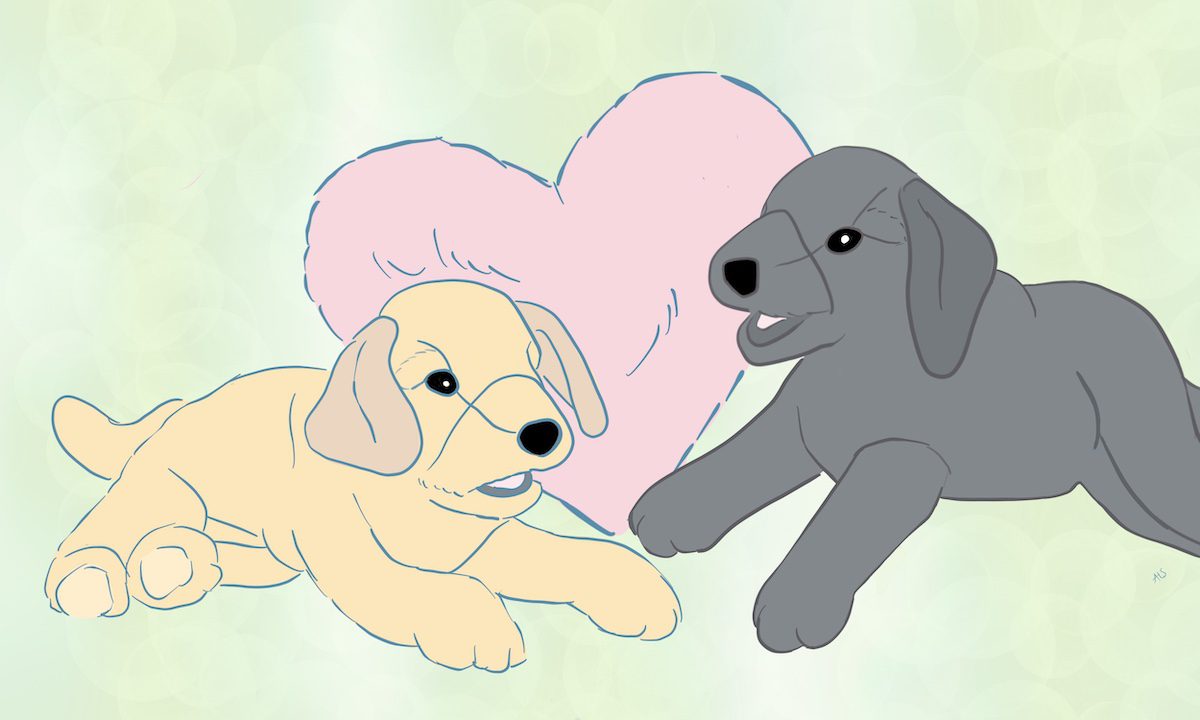I texted my sister to ask if she knew what a furry was. Aren’t those the sexual deviants? She responded, having fallen for the media narrative that the fandom is full of fetishists—weirdos who go to sex parties and possibly engage in bestiality. I sent her back a photo of a teal elephant fursuit I had discovered online with wide eyes, a round, bean-bag shaped body, and limbs that flared ever-so-slightly toward soft, flat elephant feet. I thought she might recognize that it looked like my favorite stuffed animals from childhood: three tiny teal elephants I had cared for like they were my imaginary children.
My sister changed the subject, I think because she had an inkling as to where this might have been going and truly didn’t want to know. Her response did not surprise me. We were from a Midwestern family of hearty stock who chose not to discuss such topics as emotionality, sexuality, or alternative lifestyles. Instead, we buried our true feelings and desires under an armor of wisecracks, designed to protect our soft parts.
As a child, my bed was lined with imaginary friends—the stuffed animals I adored, which included bears, dogs, elephants, and sea mammals. At the time, they provided a layer of security between me and whatever monsters I perceived to be living in the closet. But as I grew older and outgrew the irrational fears, I didn’t outgrow my plush pals. I’d have to hide them when friends came over. “I’m sorry,” I’d say to Peanut the manatee and Jambo the giraffe as I shoved them into a tote bag and out of sight. I considered them sentient beings, even if their sentience was defined only by the thoughts I projected into their batting. My cozy companions offered me comfort without condition and had earned their status as trusted confidants.
In my thirties, I embraced this part of myself even further, in private. I upgraded to animal puppets, which are basically just stuffed animals you can give colorful personalities to. I got myself two dogs—one black Lab puppet and one yellow Lab puppet, named Blackberry and Waffles respectively—and used them to unwind around the house by making them sing or dance or pretend to conduct an orchestra. My husband, whom I married at thirty, seemed to accept this new stage in my personal development, although he didn’t always indulge me. Sometimes I’d make little Blackberry sniff at his jean pocket while we were on the couch and he’d stare straight ahead at the television, echoing an expression of exhausted tolerance that I’d become used to from my own family. When I’d bring my hobby up casually around other adults, their eyes would widen as their faces simultaneously froze; the result, I think, of the mind trying not to let the face contort in horror.
I eventually got tired of feeling like a lone weirdo and decided to poke around the internet in search of other stuffed animal people. That’s when I found something else: furries. A furry is loosely defined as a person with an above-average interest in anthropomorphic animals, which can include mainstream childhood favorites such as Simba from The Lion King, darker adult fare like BoJack Horseman, or characters that are entirely self-created—and sometimes highly sexualized. The community exists largely online but throughout the year, its members converge at hotels and convention centers around the world. Some come dressed as wolves, foxes, or multi-animal combinations, ecstatic to have a place where they can be themselves—by pretending to be something else.
Only about a fifth of furs—a noun that’s also used to describe a member of the fandom—wear the mascot-like fursuits that have become a source of their infamy. The media has long portrayed furry as a sexual fetish, in which people have sex in-suit, also known as “yiffing.” But it’s only a fetish for a small minority of the community. And as those who have paid thousands of dollars to dress up as custom characters might tell you, fursuits are quite hot and not particularly easy to clean. Although most furries do not wear costumes, almost all have what’s known as a “fursona” or avatar of an animal character with whom they identify. The character can be a hybrid, prehistoric, or even mythological beast.
I was a little surprised to learn about a stigma in the furry community surrounding plushophiles—people who are emotionally or sexually aroused by their stuffed animals. I personally saw nothing sexual about them: if sex was on the horizon, I’d either remove my fluffy friends from the bed or cover their innocent little eyes. Other people, it turns out, modify their “plushies” for sex with what’s known as strategically placed holes (SPHs) and strategically placed appendages (SPAs). On WikiFur, I found a code for plushy preferences, from cartoon-like or “tooney” features to a more natural or “feral” appearance, whether you feel actual love toward your stuffed animals, and if you’re sexually aroused by them. A non-sexual interest in puppets fell within the spectrum.
In my research, I discovered an annual furry convention in the Chicago suburbs known as Midwest Furfest. The schedule listed an event called “Puppet Meet and Greet,” where furry puppeteers could introduce themselves and their puppets. But the convention had just passed, and the next one within a few hours of where I lived was The Furnal Equinox in Toronto, although it lacked any overt puppet-related programming. My interest, it seemed, was niche even among furries. I wasn’t sure what they would think of a puppet person, but decided it couldn’t be any worse than what normal society thought of me. I hoped I could find some kernel of understanding that had not yet revealed itself in my everyday life.
Two months later at the Westin Harbour Convention Center on the northwest shore of Lake Ontario, I waited in line to pick up my convention-issued badge. There were ribbons I could attach to it in order to present my preferred pronouns—she/her—as well as other inclinations like No Hugs or Ask for Hugs (I’m in the former camp). It might sound obvious that a sensory experience would be a big part of the furry community IRL, but I didn’t fully grasp why until I saw a large red kangaroo engage in a slow embrace with a mouse. I could almost feel the soft, silky fur on the kangaroo’s rump as the mouse paw glided over it.
I was carrying my dog puppets in a zippered tote but was not yet ready to show them to anyone. There were other, safer ways to assimilate. I headed straight for the vendor area, referred to as the “Dealer’s Den,” where one could procure furry art, paws, ears, custom fursuits, and—for a reason which still remains unclear to me—various “species” of hot sauce. I passed a table of computer mouse pads that featured illustrations of feminized cats with furry breasts or butts that rose up out of the rubber mat to act as a wrist pillow for what I imagined to be intrepid internet browsing.
A booth of fursuit accessories caught my eye, so I stopped to check them out. I had my heart set on a pair of fluffy paws, but the nice ones were two hundred dollars, so I opted instead for a headband with white ears that made me look like an arctic fox. Two orange foxes in full fursuits were standing behind me having a surprisingly banal conversation. I heard one low voice muffled by layers of foam and polyester say to the other, “It could be a herniated disc, but I mean, what do I know?”
I stepped into the bathroom to check my appearance and noticed that, although I was what I would describe as “only thirty-seven” and with no children, in this scene I read more like a mom. I’d seen a few mothers sitting on lounge chairs next to mini-fursuiters. We stood out in our jeans and turtlenecks, sporting the same hair color that was assigned to us at birth. The accessory of choice for furry moms was a set of fluffy ears. With mine securely in place, I hurried to my introductory event, “Lady Furs,” a meet-up of women and gender-nonconforming individuals.
We started with a get-to-know-you style round of Bingo, introducing ourselves by finding words and phrases we identified with on one another’s cards, such as “geek,” “crafter,” or “loves Pusheen.” During Bingo, I met a woman who had removed the purple head of a cat fursuit and set it on a chair. She was wearing matching fuzzy purple paws, complete with pink toe beans, and furry shoes with chunky clear plastic heels. She had a warm smile, so I built up the courage to tell her I liked animal puppets, then asked if there was a scene for that here.
One eyebrow arched as her face fell.
“No… that’s not a thing,” she said.
My cheeks flushed in shame. Had my white fox ears been real, they would have flattened back against my head. I had seen a man walking around with two stuffed lambs who looked like they’d been loved for thirty years, a woman with a plush toucan peeking out of the zipper of her hoodie, and another man in a full tiger suit carrying a large pink bunny with floppy ears. Animal backpacks bounced plentifully throughout the crowd. I had assumed, perhaps wrongly, that the leap to a fursuit that only covered your hand wouldn’t be such a stretch. If anything, it seemed like a natural bridge between interests.
Apparently it wasn’t, or at least not at this particular convention, which made me feel both stupid and maybe a little perverted. The fact I enjoyed stuffed animal puppets neither for sexual pleasure nor for professional performance somehow made it more embarrassing. I glanced down at my tote bag sheepishly, which was stuffed with the pillow-like bodies of my beloved Blackberry and Waffles, who would remain, I decided, hidden for the foreseeable future.
I joined the Lady Furs scavenger hunt silently, for which we were sorted into groups. We walked around the convention taking photos of items from our list, such as rainbows, fursuiters with glasses (it was surprising how many animal costumes required prop glasses) and more open-ended thematic ideas like cats vs. dogs. One of the women in my group had a small stuffed dog on her shoulder with a badge that said “Mr. Woofens: Ambassador of Cuddles.” Maybe the key was to “wear” the animal puppet, to treat it as an accessory and not a loved one, thereby making it more acceptable?
One of the things I’ve always appreciated about animals—real or imagined—is that there is no talking required, and they come with no preconceived notions or judgments. You don’t have to navigate the intricacies of societal pressure in the same way. Obviously, humans dressed as animals are still humans, but I had naively hoped that in the anthropomorphization process, some of the qualities I admired in non-humans might have been absorbed. After only two hours, I was emotionally fatigued enough to need a break. So I stopped in the bathroom lounge, sat down, and laid Blackberry across my chest. A woman walked past me toward the stalls and smiled, a glimmer of recognition spreading across her face.
I ended up skipping the next item on my itinerary, “Advanced Fursuit Construction,” since I wasn’t really a professional crafter, as well as that evening’s “greymuzzle” meetup for furs over age thirty-five. There was never any chance I’d be up for the 12 a.m. adults-only “Banana Eating” event, let alone “Puppy Play,” a form of BDSM where people wear leather dog masks and let their minds go while they play with squeaky toys. Instead, I returned to the solitary comfort of my tiny hotel room, which was just the right size for one full-grown woman and her two stuffed animal puppets.
The next morning, sunlight flooded into my room and across my two fluffy friends who were sprawled out on top of the white hotel bed runner on their half of the mattress. The yellow Lab, Waffles, was frozen on his back with his mouth open, sueded paws facing the stucco ceiling. Blackberry was on his stomach, a long pointy tail trailing his shiny rump. By this point, I had decided that we hadn’t come all the way here just to hide. My insides shriveled at the thought of putting my puppets on full display, so I decided to start with just one. I wasn’t hoping for anything more than the absence of outright condemnation, but even that felt like a lot to ask.
I tied a red t-shirt around Blackberry’s neck like a cape, summoning the kind of childlike defiance only a woman old enough to have wrinkles sprouting from the outer corners of her eyes and a stuffed animal puppet riding shotgun on her shoulder could possess. Together, we headed back to the convention center to attend a small group discussion called “Breaking Out of Your Shell,” which seemed like the perfect place for our debut. I sat down on a padded chair and set Blackberry on the taupe upholstery of the seat next to me while momentarily adjusting my belongings. A woman two chairs over looked uncomfortable as she leaned in toward me.
“I am saving this seat for my son.” she said.
I realized that the woman thought my dog puppet required his own seat.
“No problem,” I said, putting him back up on my shoulder such that his hind legs and tail hung down behind me, fully visible to the back row, while his front paws and face—a little deflated without a hand inside of it—rested gently on my chest. Blackberry had enough batting to give his body permanent volume and his paws the weight to dangle. He was feral, meaning he looked very much like a real black Lab puppy, with a little black faux-leather nose, pink tongue, and plastic eyes that got lost in his fur.
The man leading the workshop, Dr. Softpaws, was neither a doctor nor an expert, but he did have a physician’s mirror wrapped around the head of his mouse fursuit. He explained that he wanted to share coping strategies for social anxiety and suggested that we stand up in front of the room to talk about ourselves for five minutes. My heart started pounding so loudly that I worried that the guy whose seat was momentarily threatened by the presence of my dog puppet could hear it. Dr. Softpaws then offered a strategy for dealing with the sudden nerves: we should put our feet flat, grip the sides of our chairs, lean back, close our eyes, and imagine the anxiety dripping out into the floor. The whole room tried it simultaneously, and although it did help, collectively we looked like we were having a group panic attack.
When I realized the public speaking idea was just a thought exercise meant to rev up our anxiety so we could practice quelling it, my nerves dissipated. Relieved, I flipped my little friend backwards so that he was facing the row behind me as Dr. Softpaws began explaining another common source of social anxiety: when two people are having a conversation and you’re standing a few feet away watching awkwardly, unsure if you can or should join. Blackberry was now looking around the crowd, opening his mouth to stick his tongue out and pant. He wagged his tail, which thumped against the upholstery of my chair. Dr. Softpaws appeared to meet his gaze, but no one else in the room so much as flinched.
When the hour-long workshop was over, I left the room and almost immediately, and a younger woman with dark curly hair stopped me at the water cooler.
“I like your…” she trailed off.
“Dog?” I offered.
“I didn’t want to get it wrong,” she said, blushing.
On Saturday evening, I attended a presentation by the only scientists currently studying furries, held in a ballroom at the convention center, where Blackberry had his own chair and plenty of space to stretch out. Dr. Elizabeth Fein, a pleasant-looking psychologist in her forties with curly blonde hair and a white lab coat, talked us through what the International Anthropomorphic Research Project knew about the fandom, including why people join—for a sense of belonging, social acceptance, and to find friends.
She explained that according to research, the fursonas of new or younger members tend to represent an idealized self—attractive, funny, outgoing—whereas those of people for whom identity is more resolved tend toward an actual self. It’s almost as if one’s relationship to a fursona is a marker on a journey toward self-acceptance, if not a catalyst, an idea that also likely applies to non-furry life. We start by presenting ourselves in a way we think will please a specific audience, but in the end, we must feel genuinely good about who we are in order for others to mirror it back.
Although people are drawn to the furry fandom for a variety of reasons—childhood interests, cartoons, related fandoms, kink—the one thing we all share is a love of animals and what they represent to us individually. What appealed to me most about furry culture was how it created a space for softness to be worn on the outside. Even a costume covered in scales or an exoskeleton was pointing toward some inner truth, a squishy vulnerability that would otherwise be difficult to name. Say for instance you find comfort in little sewn-on faces that never stop smiling, and maybe you even enjoy making them talk.
After I returned home from the Furnal Equinox, I unpacked my puppets and placed them back into the bed, where they mostly resided.
“How was your furry thing?” My husband asked.
“Fine,” I said, because it felt too complicated to explain. But maybe I didn’t have to. Over the next few weeks, I noticed he showed more interest in my stuffed animal herd lining the back of our leather sofa, and seemed to have even befriended Jambo the giraffe.
Several months later, I visited my family in the Midwest and told them I’d taken my puppets to a furry convention. I gave them only the superficial highlights—how I’d paraded along Lake Ontario among a sea of tooney eyes and pink felted tongues, how people in animal costumes had popped and locked on stage during a dance competition, and how a man who identified as a pterodactyl seemed to be subtly hitting on me. I liked making them laugh and I knew they appreciated my silliness. Afterwards, my mom started sending me cards with black and yellow Lab puppies on them. At Christmas, my dad took an interest in one of my childhood stuffed elephants. My sister even accompanied me to a bookstore where I liked to cruise the animal puppets. I think they understood, even if they couldn’t quite find the right words.
***
Rumpus original art by Alana Salguero.








